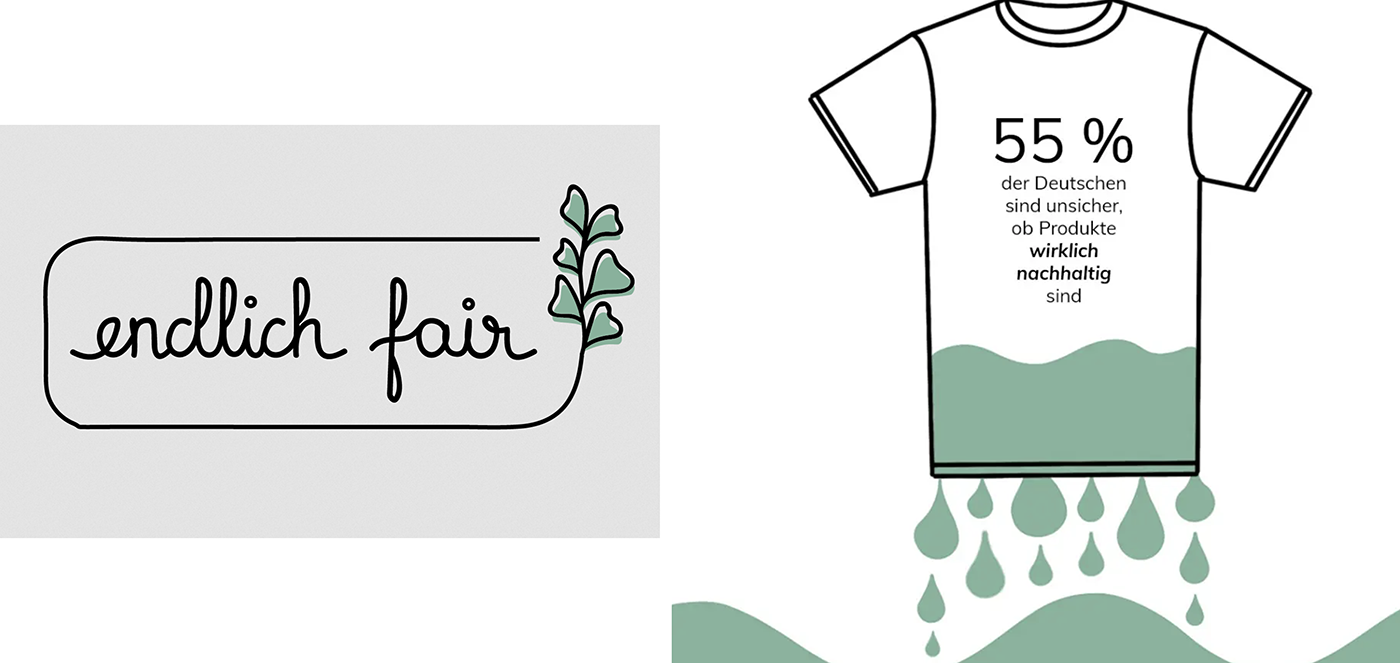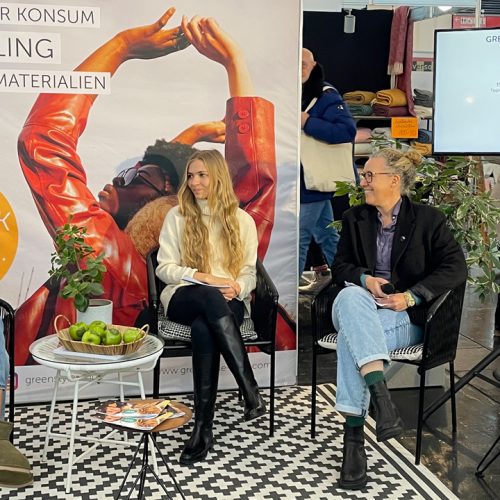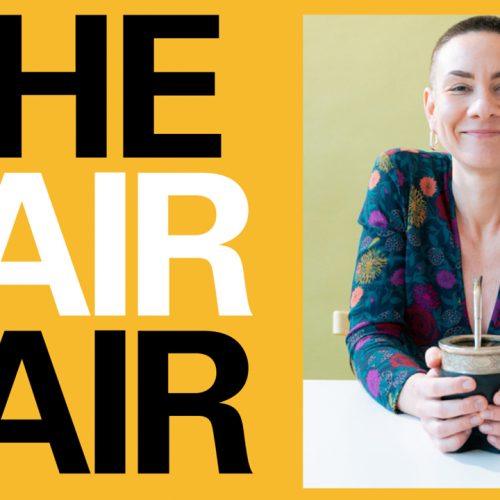endlich fair sounds pretty great, we think. After all, that is all of our master goal: fair to people, fair to the environment, along the entire textile value chain. We are currently miles away from that. If you want to do better, buy sustainably produced clothing. Julian Weiß and Caro Reili have found that the majority of the population finds fair fashion interesting, but is still reluctant to buy it. The reasons for this are the credibility of fair fashion and the high price of fair fashion compared to conventional fashion.
To counteract this, the two masterminds have developed the endlich fair score, which, on the one hand, evaluates the brands against the background of sustainable criteria and, on the other hand, carries out an online price comparison that shows us consumers where I can find the sustainable item of clothing cheapest.
Julian gave us insights into their development.
Mirjam Smend: What is the idea behind endlich fair?
Julian Weiß: It all started with our blog fairlier. The name was created by increasing fair, fairer, fairlier. The aim was to share our own journey and experiences regarding fair fashion with readers. Caro started sewing pants, bags and tops with her mother and became increasingly conscious about clothing consumption. Although I was always very minimalist with a T-shirt and jeans, I didn’t really think much about the production conditions along the textile value chain.
Mirjam Smend: Has your view of the textile and shoe industry changed?
Julian Weiß: Absolutely. With fairlier our perspective has completely changed. Whenever we were looking for a new piece of clothing ourselves, we researched it and shared our findings with our readers. This is how guides were created on the subject of sustainable shoes, sustainable jeans, sustainable bed linen and much more. Nevertheless, even after two years of research, we found it difficult to recommend fashion labels to friends and family that were convincing in terms of sustainability. We didn’t want to leave it like that. We researched and realized that it’s not just our environment that feels this way, but that the majority of the population finds fair fashion interesting but is still hesitant about buying it. According to several studies, there are two reasons for this: Firstly, it is the credibility of fair fashion. On the other hand, the high price of fair fashion compared to conventional fashion/fast fashion
Mirjam Smend: The beginning of endlich fair?
Julian Weiß: Exactly. We wanted to remove these obstacles and that’s how the idea for finally fair came about. We would like to use a transparent score to check the sustainability efforts of fashion labels and make them comparable. Each criterion that we check and that contributes to the overall score can be viewed in detail alongside the method paper with the derivation of the score. We also offer a price comparison for clothing items from the rated brands and compare the prices in a wide variety of online shops such as Loveco, Greenality, Avocadostore and also Amazon. There is also the option of switching directly to platforms with second-hand clothing from the respective labels.

Mirjam Smend: endlich fair links to online shops in the price comparison that do not stand for sustainability (e.g. Amazon etc.)
Julian Weiß: The platforms listed do not necessarily represent sustainability. These are the reasons why we include them: In order for “Fair Fashion” to become the new “Fashion”, fair clothing must be visible where the general public is. When comparing prices, we aim to present the best possible price, regardless of the platform. What is also important in our decision: We not only show the best price, but also all the shops that offer your item of clothing. We therefore offer everyone the opportunity and overview to buy the product in a shop of their choice.
Mirjam Smend: What does the finally fair score say?
Julian Weiß: With the finally fair score we evaluate how extensive the sustainability efforts of fashion labels are. We have developed around 100 criteria in the following subject areas: transparency, social factors, ecological factors, animal welfare and innovation. It is important to us that a score of 100% does not mean that a fashion label is 100% sustainable. Rather, the fashion label strives to achieve the best possible standard in all areas in order to contribute to a sustainable economy. All information about the finally fair score >>>
Mirjam Smend: You worked with a methods paper to develop the score.
Julian Weiß: That’s why we derived the criteria in an approximately 130-page method paper: Identifying social, ecological and economic challenges in the shoe and textile industry. Categorizing the challenges into social and ecological aspects as well as the areas of transparency, animal welfare and innovation. Researching approaches that lead to improvements in the sub-areas. Determine the weighting of the criteria and create main and subcategories. Coordinate with experts and take feedback into account as far as possible regarding weighting and criteria.

Mirjam Smend: And how do you ensure that the information always remains up to date?
Julian Weiß: We are constantly revising the endlich fair score. To do this, we keep a public log in which we record changes for the next version. In this way, we would also like to ensure more transparency and if there are statements in the method paper that need to be corrected, we will also list them.
Mirjam Smend: What is your goal with endlich fair?
Julian Weiß: Our goal is primarily to create transparency and credibility in the shoe and textile industry. Readers of finally fair should be able to make an informed purchasing decision using the information about the fashion labels. At the same time, we want to use the price comparison to make it possible to purchase a new favorite item of clothing at a good price.
Mirjam Smend: Why is your platform called endlich fair?
Julian Weiß: endlich fair should reflect the feeling when you have finally found a sustainable alternative for the item of clothing you want and are looking for. Caro and I have often felt the same way in the past when, for example, we finally found a pair of jeans that we felt comfortable in and that were fair and ecologically responsible.
Mirjam Smend: What is the most important insight you gained from the method paper for the endlich fair score?
Julian Weiß: The question of whether sustainable clothing can even exist. Sustainability is very complex and requires the interaction of a wide variety of aspects on an economic, ecological and social level. It is questionable whether this balance is also achieved when producing sustainable clothing. A piece of clothing that is sustainable is best not produced at all. It is always important to question your own consumer behavior. This doesn’t just apply to clothing. Caro and I are far from perfect. With finally fair we can hopefully make a small contribution to ensuring that fair fashion becomes the new fashion in the future.
Mirjam Smend: What is your vision?
Julian Weiß: We know that the endlich fair score is far from perfect. We would like to exchange ideas and continually improve the score. Our vision would be to be able to give a concrete statement at product level about the impact the garment has on social and ecological factors.
Try endlich fair now. Click here >>>







